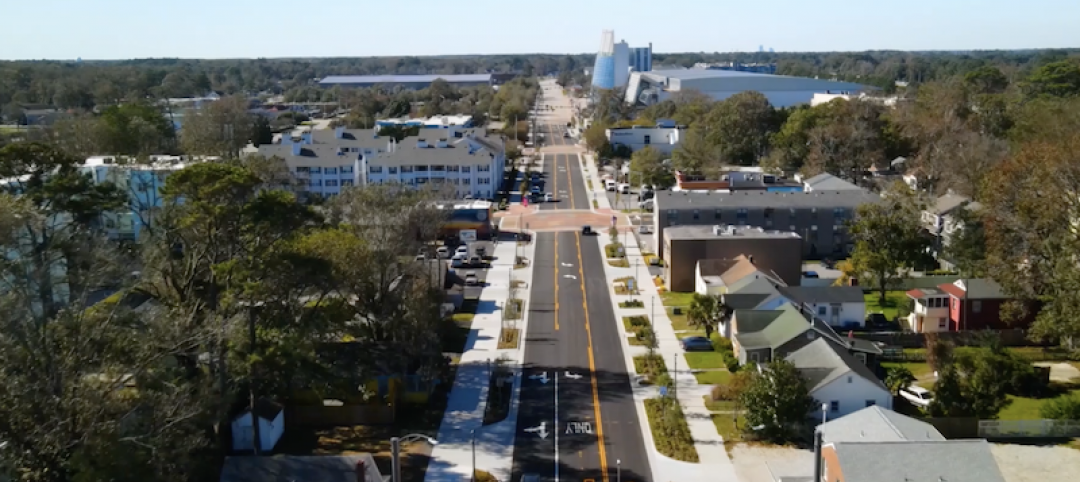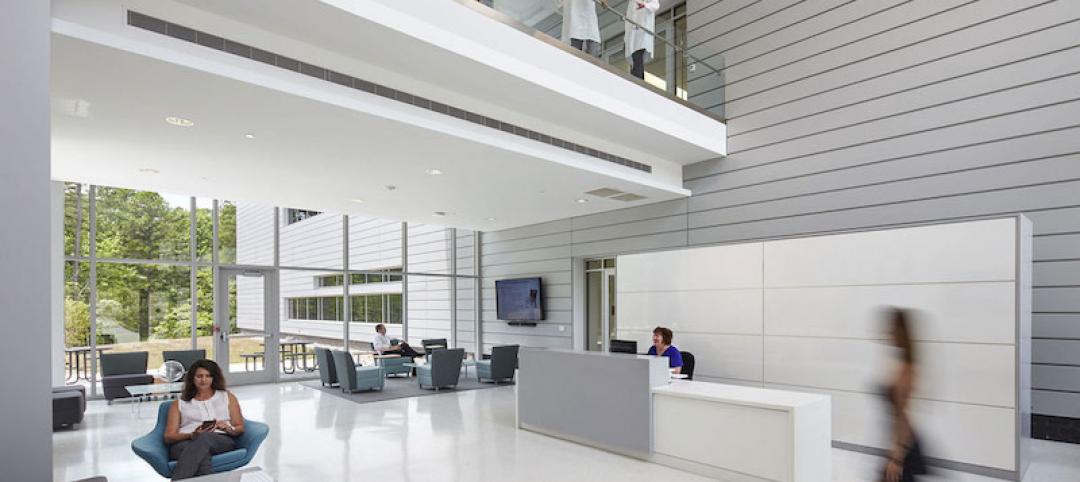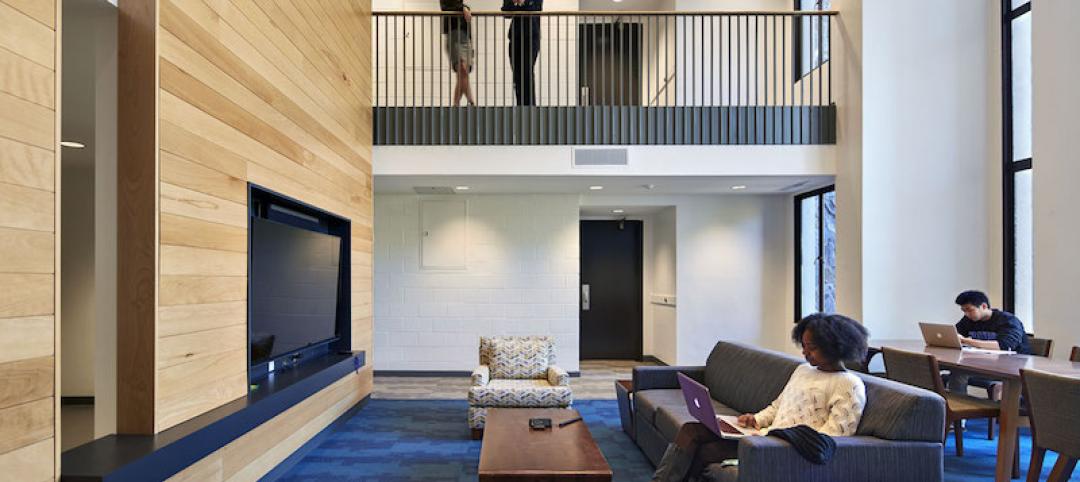The last 20 years have seen trends in student housing materialize, develop, shift, and even reverse. New ideas are tried and either embraced or discarded, or perhaps melded with successful concepts from yesterday. As colleges and universities seek to keep students on campus, new styles of accommodation are emerging, compelling us to discuss how underclassmen student housing today is changing – and what remains very much the same.
Focus on Improved Housing for Freshmen & Sophomores
As part of a surge in new housing projects for freshman and sophomores, we are seeing increasing demand for double occupancy rooms and suite-style arrangements in both new construction and renovation projects. The return to these more traditional student housing units stands in stark contrast to recent trends geared toward individual bedrooms and apartment-style units, but isn’t shocking when you consider the concerns facing colleges and universities related to student socialization and corresponding retention, not to mention the cost of higher education. In 7 Trends Shaping Student Housing on College Campuses, we discussed how the arrival of Generation Z on campus is influencing student life environments. With college students arriving on campus as intuitive users of technology and likely never having shared a bedroom, institutions of higher education are tasked with supporting these students in balancing privacy with healthy social interaction.
Better Bathrooms Protect Student Privacy
In conjunction with the emphasis on traditional, shared bedroom units, ‘spa bathrooms’ are growing in popularity, helping to balance student-demanded privacy with intentional social space. Colleges and universities are responding to clear student preferences for private environments for showers and toilets. Conceptually, these spaces are not completely disconnected from the community bathrooms of yesterday, as spa bathrooms are often centralized but provide either complete or partial privacy. In recognition of the unique opportunity for socialization that community bathrooms historically offer, spa bathrooms will often include private shower and toilet facilities, but common vanity sinks and space where students will see and interact with each other, making new connections and building stronger relationships.
Schools in the Big Ten are taking this concept a step further. While other institutions are typically creating nice spaces that provide toilet and shower privacy, schools including Penn State and UNC Charlotte are providing complete private bathroom facilities for students. Sometimes provided within a larger group bathroom or located off a hallway, this approach maximizes student privacy – and arguably safety – in the restroom setting.
Invigorating the Social Experience with Game Rooms and Great Rooms
A key challenge to institutional goals for student interaction relates to the accessibility of technology. With virtually every college student carrying a smart phone and laptop at all times, social networks, games, and other entertainment is literally at their fingertips. They no longer have to leave the privacy of their rooms to seek out an interaction, movie, or game. Public spaces that support active student life on college campuses need to adjust in response, offering experiences that are both compelling and unavailable via personal devices.
High tech amenities like the gaming rooms created in the renovation of Edens Quad at Duke University demonstrate the successful execution of this strategy. These rooms create an ecosystem of gaming environments, including places for the serious, even competitive, gamer as well as those more interested in a casual, relaxed environment. As a result, they are a huge draw for students, integrating robust technology with social engagement.
Student life design also continues to see the blurring of the lines between living and learning spaces as teaching methodologies change and intentional living-learning environments are created. Great rooms and group study spaces are frequently integrated into residence halls to support objectives for socialization as well as to meet student needs for completing project- and team-based assignments. Designed as comfortable, inviting “living rooms,” great rooms need to be strategically located near the main lobby and transparently highlight the activity within to encourage students to engage with the space and each other. The great room in Duke University’s Edens Quad, for example, offers multiple functions including private study, group collaboration, and even a coffee and food component. Beyond functionality, the inclusion of features such as a fireplace or piano convey a sense of home for students, supporting the use of these environments as social and relaxation spaces.
These key shifts in underclassmen student housing reflect the changing generational demographics on campus as well as the different needs of underclassmen and upperclassmen. As student life designers, we continuously look to the future and consider the primary audiences whose needs must be weighed as these environments continue to evolve.
More from Author
Clark Nexsen | Sep 30, 2024
The importance of selecting healthy materials for K-12 projects
Clark Nexsen interior designers Anna Claire Beethoven and Brittney Just, CID, IIDA, LEED Green Associate, share why it is imperative to specify healthy building materials in K-12 schools.
Clark Nexsen | Aug 1, 2024
How current and future trends are shaping the libraries of tomorrow
Over the last few years, public libraries have transitioned from being buildings that only store and lend books to being fully featured community centers.
Clark Nexsen | Apr 25, 2024
How pools can positively affect communities
Clark Nexsen senior architects Jennifer Heintz and Dorothea Schulz discuss how pools can create jobs, break down barriers, and create opportunities within communities.
Clark Nexsen | Oct 2, 2023
4 design strategies for successful K-12 magnet schools
Clark Nexsen's Donna Francis, AIA, Principal, and Becky Brady, AIA, share four reasons why diverse K-12 magnet schools require diverse design.
Clark Nexsen | May 17, 2023
Designing K-12 schools for students and safety
While bullying, mental health, and other acts of violence are all too common in schools today, designers have shown that smart and subtle preventive steps can make a big difference. Clark Nexsen’s Becky Brady shares how prevention and taking action at the design level can create safe and engaging learning environments.
Clark Nexsen | Jul 1, 2022
How to apply WELL for better design outcomes
The International WELL Building Institute (IWBI) cites attracting top talent, increasing productivity, and improving environmental, social or governance (ESG) performance as key outcomes of leveraging tools like their WELL Building Standard to develop healthier environments.
Clark Nexsen | Jun 3, 2021
What's next for workplace design?
Balancing personal space and the need for collaboration.
Clark Nexsen | Feb 17, 2021
Best practices for streetscape design that cultivates community
Well-designed streetscapes provide a wealth of benefits for their respective communities.
Clark Nexsen | Oct 20, 2020
Best practices in S+T office design
Within the constraints of the typical COVID-19 office protocols, lab users face the additional challenge of working with hands-on processes, tight schedules, and shared resources.
Clark Nexsen | Aug 3, 2020
5 reasons universities are renovating student housing
Clark Nexsen’s Student Life practice leader, Peter Aranyi, discusses the benefits of renovation and why it offers particular value to campuses nationwide.
















